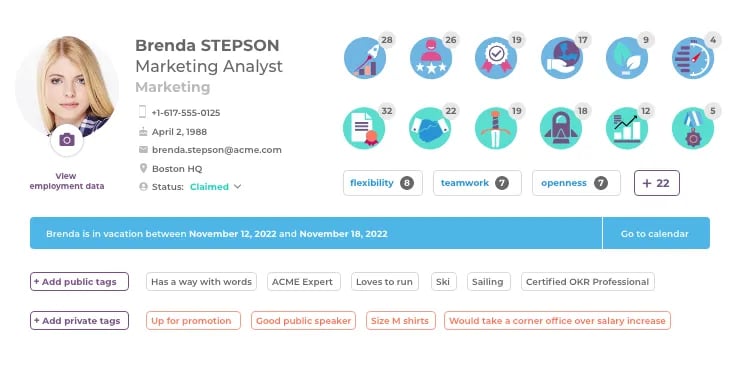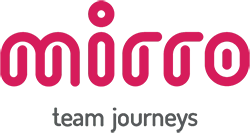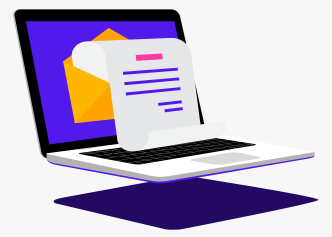Employees Profile: What Is It and How to Create It?

Attracting top talent to your company is no easy job. The main problem that often occurs in the hiring process is the need for more precise specifications about the respective position. When you don't have enough data about the person you want to hire, the first step is to create an employee profile - this will help you find the ideal colleague for the given job.
Creating an employee profile will not only help you in the hiring process but also in retaining your best people. After all, employee profiles are more than professional resumes. Companies can use them to establish a more systematic and transparent approach to hiring, improve the quality of management, and facilitate team collaboration.
But what exactly is an employee profile, what benefits does it yield to organizations, and how do you create such a profile? Read on to find out the answer to these questions and more!
What is an employee profile?
An employee profile is a list that outlines an individual's key information and characteristics, including skills, qualifications, and personality traits.
This document is typically used as part of the hiring process and can also be used for performance management reviews, promotions, and other HR-related purposes.
To recruit the best talents for your company, you need to know the qualities and skills of your future colleague before posting the recruitment announcement. Therefore, an employee profile should be a "candidate persona" with all the criteria the potential candidates must meet to move on to the next step.
However, in an organization that values technology, an employee's profile could be a personal page where they share useful personal information with colleagues. Such a profile can have many advantages, both for those already hired and future colleagues.
A typical employee profile would include personal information, work experience, skills outside the workplace, life goals, personal philosophy, and anything else that might be relevant to their role within the company. This document provides a quick and easy way for employers to get a snapshot of an individual's qualifications.
Top benefits of having employee profiles
Like most businesses, you probably have a pretty good handle on your customer profiles. But what about your employee profiles?
Sure, you know the basics - name, job title, years of experience, etc. But do you really know what makes your employees tick? What motivates them? What stresses them out?
Knowing the answers to these questions can be extremely valuable for your hiring and retention processes. Here are five benefits of having employee profiles:
1. Help you find and hire the right people
For fast-growing companies, knowing each employee on a personal level is becoming a challenging task. Therefore, finding the ideal applicant for a position or promotion becomes difficult.
Employee profiles are great resources for HR managers and executives looking for the ideal candidate to fill a particular function or responsibility since they store details about a person's professional experience and background. As a result, having employee profiles saves top management a lot of time.

2. Bring remote teams together
Remote or hybrid working models have become the new normal after the pandemic. As a result, social interactions among colleagues, previously made possible by office spaces, are decreasing significantly.
Companies can boost visibility in their remote or hybrid workplace by creating employee profiles, which give an authentic feel of each employee's personality. In addition to their professional qualifications, the employee profiles will also contain personal information that will help put faces to the names of people you may never see in person.
3. Create a strong employee network
A company supported by a solid team of employees who get along with each other is set for success and has greater chances of outperforming its competitors.
For some people uncomfortable with face-to-face contact, networking can feel overwhelming. Employee profiles, therefore, act as a crucial catalyst for developing a system that encourages professional networking among employees.

4. Onboard new employees
Another benefit of having employee profiles is that they support the onboarding process. If your company has a searchable employee profile database, it will be easier for employees to become familiar with the organization and vice versa.
How to create an employee profile for future candidates
In the interview phase, any HR professional knows that an employee's profile is essential to streamline the early stages of the process. This way, you can ensure the remaining candidates meet the initial requirements.
Apart from the fact that the potential hire must carry out their activity at a very high level of professionalism, respecting the deadlines and offering quality in everything he does, it is helpful to consider other essential traits.
So, when you create the ideal employee profile for a better hiring process, consider the following aspects:
Good team player
Every person has methods by which they can work better and more efficiently, and when these are shared with the whole team, those involved can benefit from their colleague's knowledge.
When a team works as a well-organized group, everyone has something to learn from one another.
Whether you have a restaurant or a corporate business, one thing is clear - teamwork is critical. So, invite some of your people to participate in the interview and give them a task that needs to be solved in the team. This way, you'll be able to see the dynamics of the candidate and if they would fit well with the group.

Critical thinking
Almost all companies want to see a candidate who has flexible thinking and an analytical mindset.
Critical thinking is the ability to analyze information and objectively make reasoned judgments. This involves evaluating sources such as data, facts, and research results. To identify the level of development of analytical skills, you can use assessments such as interactive tests, intelligence games, or abstract activities.
Hobbies and interests
Beyond the skills already acquired by a candidate or the set of future skills, which he may develop within your team, it is very wise to pay attention to the natural inclinations of the candidate.
👉 How do they spend their free time?
👉 What are they usually doing outside work?
👉What are their hobbies?
These questions are very relevant if you want to find the best candidate. For example, if they like to participate in marathons, this means that the candidate is a healthy, active person who has the potential to be more focused and more involved in the tasks at work.
Desire for development in the workplace
A modern company will always offer its people career development opportunities, so the ideal employee must desire to learn new things and evolve within the organization. Also, a person eager to grow will be open to experimenting with new methods and ideas, thus ensuring clarity and efficiency at work.
Employee profile software for a better team experience
If you want to take care of your teammates, it is necessary to have tools at hand to make their work experience more pleasant.
At Mirro, each team journey begins with an employee profile that contains all the information about each member - this way, new colleagues, especially those who work remotely, can learn details about their teammates, such as their names, skills, and hobbies.

There are many reasons why the employee experience is better with advanced employee profile software, of which:
- It helps you create an efficient employee profile for future hires. When planning to bring a new member to the team, it is important to consider current members' qualifications, qualities, and skills to get an idea of what your future colleague should be like. And software with their profiles can make this process easier for you, thanks to the fact that you already have enough data within the company to guide you.
- It encourages socialization and interaction. Employee profiles will help colleagues interact more with each other through accessible and easy-to-use features, such as birthday alerts, days off, holidays, and accomplishments. This way, team members can congratulate each other or communicate more effectively about the work schedule or joint projects.
- It helps set OKRs for new colleagues. Managing OKRs for each of your team members has never been easier, even for newcomers. With an employee profile, you can keep everyone updated and offer people a vision for the future and more clarity regarding their role in the team. Moreover, OKRs can help newbies to have a clear picture of their first projects and how they can grow and improve within the company.
- It helps reduce paperwork. No more post-its and holiday sheets hanging on the noticeboard! With our HRIS platform, you can have a more organized schedule and thus make communication more efficient between colleagues regarding days off, new hires, and temporary replacements. Also, you can upload documents and CVs, so you can have a centralized database that can give you easier access to useful information about the people within the company.
Therefore, an employee profile is essential to bring a new person into the company but also after hiring. With employee profiles, you can track their progress and how they communicate with other team members and ensure they understand and follow the company's values.
Want to find ways to lead better and improve your team? Contact us for more information about our services and offers; start your Mirro journey now!




